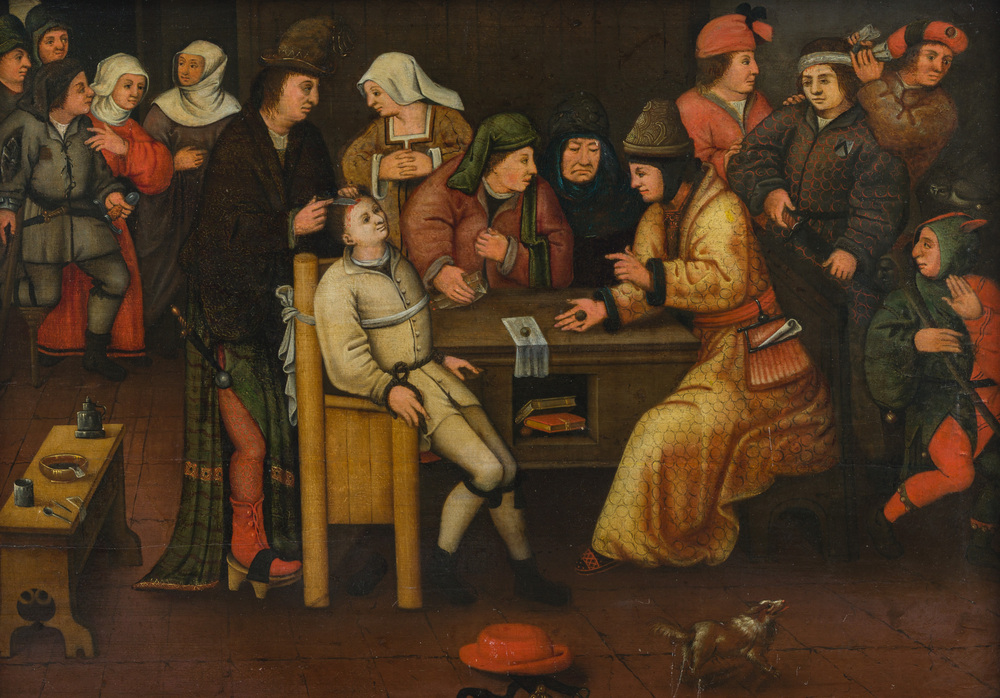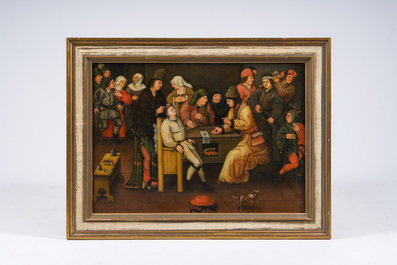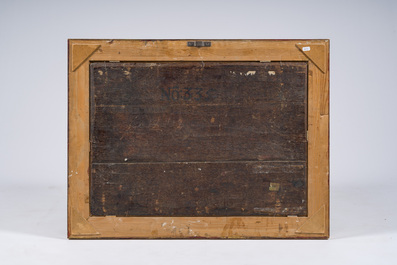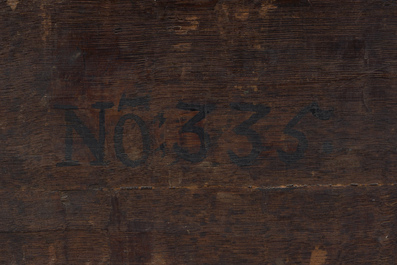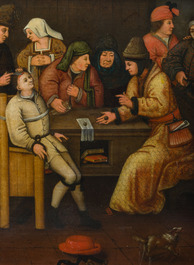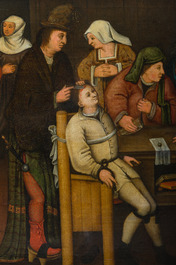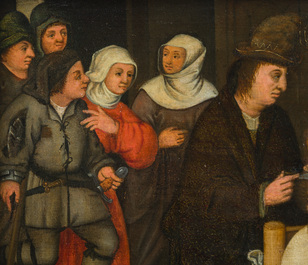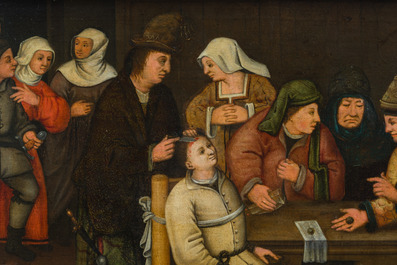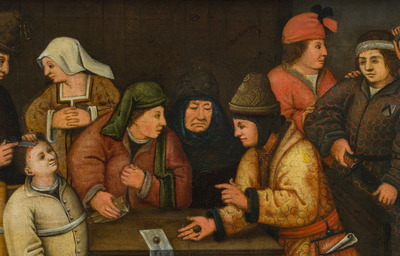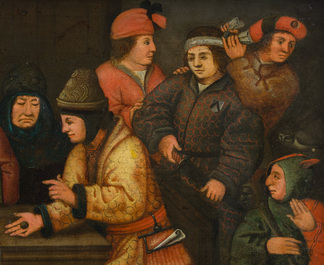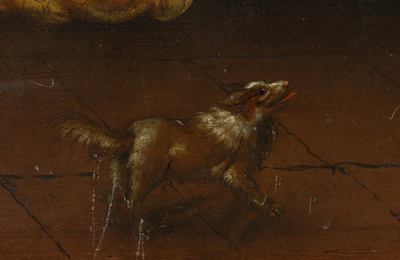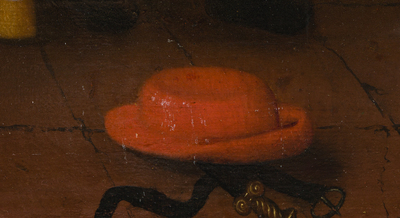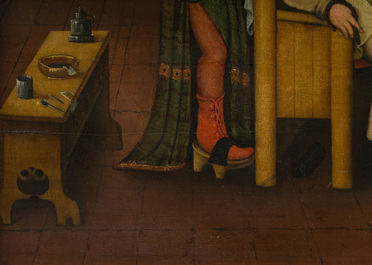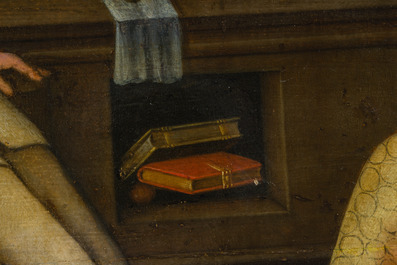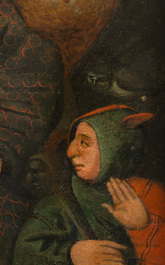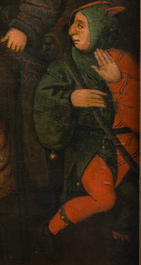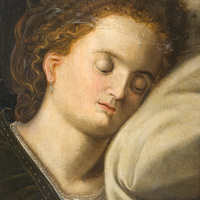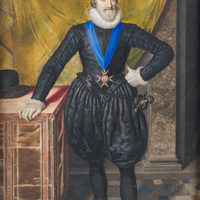We have to double-check your registration and make sure this is not an automated entry in our system. Please complete the test below...
Flemish school: The cutting of the stone, oil on panel, early 17th C.
Work: 72,5 x 51,5 cm
Frame: 87,5 x 67 cm
A stone-cutting is a motif from late medieval literature in which a quack exploits the foolishness of the fool Lubbert Das by convincing him that he could be cured of his stupidity by removing a stone from his head. This motif was used to satirize foolishness and gullibility. The stone-cutting motif also appears in various 16th-C. and 17th-C. paintings, including those by Hieronymus Bosch, Pieter Bruegel the Elder, Pieter Huys and Jan Steen.
Our version is unusual because the person in the upper right corner, being treated after the stone cutting with a bandage around his head, has a coat of arms on his chest. This coat of arms, which can be described as an inverted V, is particularly similar to the Kortrijk coat of arms, which possibly suggests the work's Kortrijk origins.
The reverse with different old collection and/or auction numbers, a stamp and a clover leaf, the individual house mark of the Antwerp panel maker Michiel Claessens. He started his career at the end of the 16th C. and was still active in the first third of the 17th C. (link and link).
Condition: (UV-checked)
- The painting in general in good and hangable condition, consistent with the age.
- Under UV-light, some retouching is visible (in different phases), especially in the right top corner (background) and the jester's clothes. Some minor retouching, not touching the faces.
- The connection between the two panels is visible at the front. The lower panel with a small natural wood crack on the left side (up to the chair).
- The four corners are slightly 'touched', possibly due to a different framing.
- The paint on the jester's clothes is lifting slightly in places.
- Left top corner a negligible spot of flaking paint, hardly visible.
- There are light scratches in the yellow dress and at the level of the dog and the red hat.
- The reverse with the panel maker's mark of Michiel Claessens, Antwerp.
- Very fascinating work. Presumably based on a lost original.
- See also the additional pictures.
